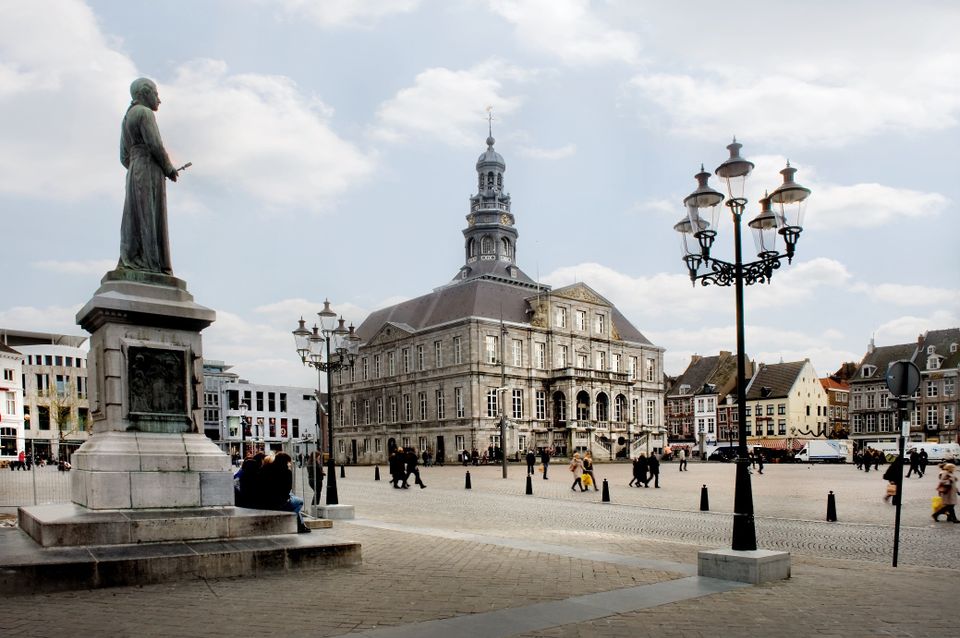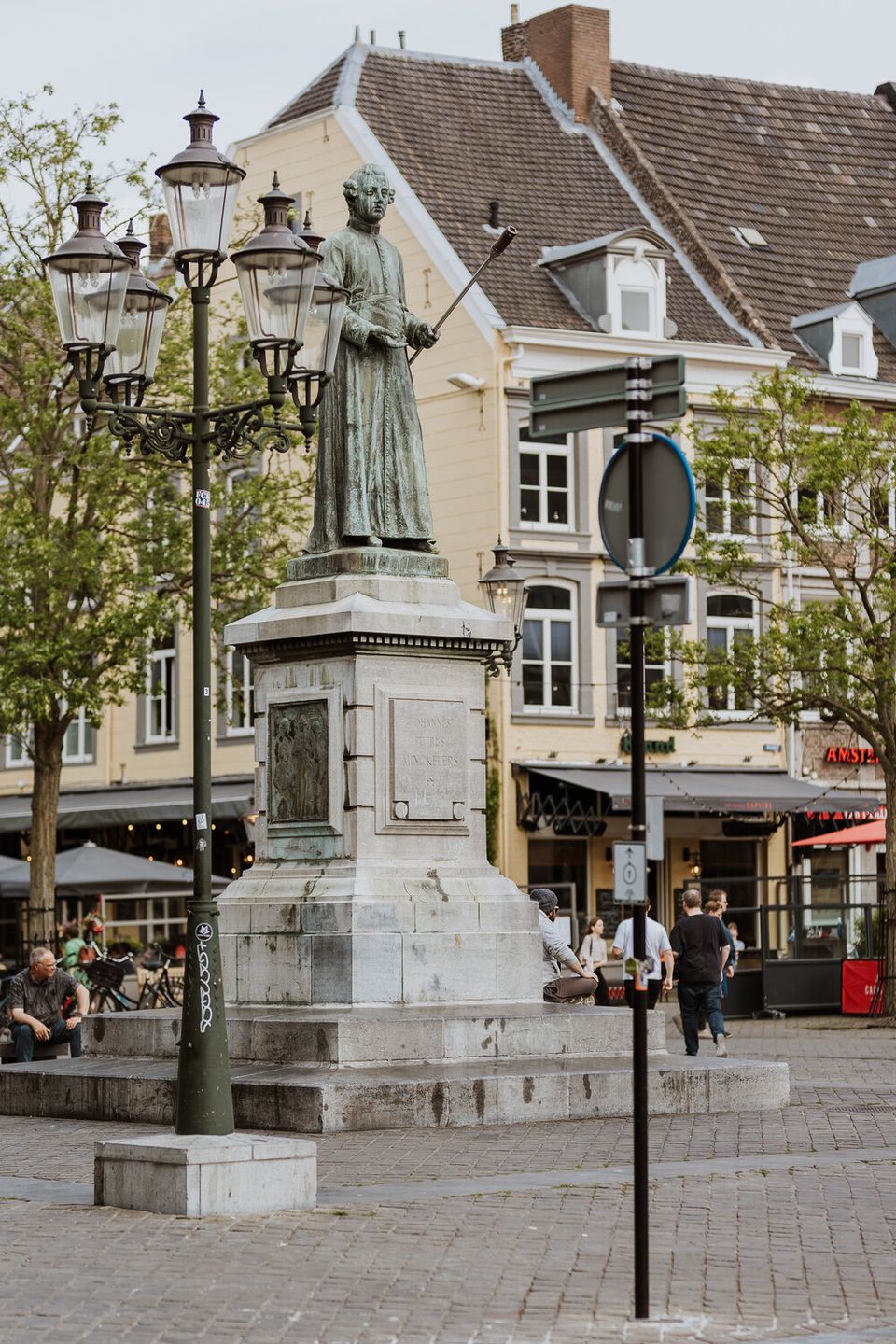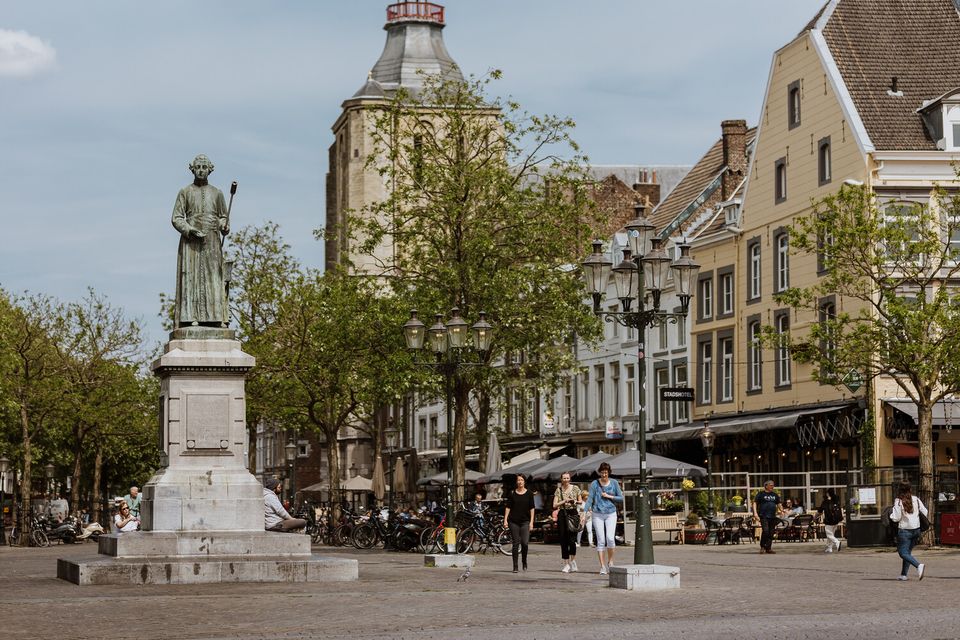Minckelers and the flame
MaastrichtStatue of Minckelers.
Jan Pieter Minckelers was born in Maastricht in 1748. His grandfather was a doctor, and his father owned a pharmacy on Herenstraat. Like many sons of the wealthy middle classes, he was educated by the Jesuits, close to the family home. In 1764, he continued his studies in Leuven, after which he became a deacon.
He was a Dutch physicist and pharmacist; he studied natural sciences at the University of Leuven, where he was appointed professor in 1771. On 1 October 1781, he (in collaboration with Van Bochaute) discovered what he called ‘inflammable air’ by heating crushed coal. On 21 November 1783, the first balloon filled with this gas took off from the park of the castle in Heverlee near Leuven; it landed 25 kilometres further on in Zichen. As early as 1785, Minckelers regularly illuminated his lecture hall with the gas lamp he had invented.
In 17…
Jan Pieter Minckelers was born in Maastricht in 1748. His grandfather was a doctor, and his father owned a pharmacy on Herenstraat. Like many sons of the wealthy middle classes, he was educated by the Jesuits, close to the family home. In 1764, he continued his studies in Leuven, after which he became a deacon.
He was a Dutch physicist and pharmacist; he studied natural sciences at the University of Leuven, where he was appointed professor in 1771. On 1 October 1781, he (in collaboration with Van Bochaute) discovered what he called ‘inflammable air’ by heating crushed coal. On 21 November 1783, the first balloon filled with this gas took off from the park of the castle in Heverlee near Leuven; it landed 25 kilometres further on in Zichen. As early as 1785, Minckelers regularly illuminated his lecture hall with the gas lamp he had invented.
In 1789, he returned to his hometown, where he made his living as a pharmacist. He was also interested in meteorology, geology, and palaeontology. Cuvier even used his description of the bones of the Mosasaurus fossil.
He subsequently taught physics and chemistry at the Ecole Centrale in Maastricht, which had been founded by the French. From 1801 to 1815, Minckelers was a member of the local council in Maastricht. In 1816, he joined the Academy of Science in Brussels. Shortly afterwards, he suffered a stroke; he died on 4 July 1824 at the age of 76.
In 1902, a committee was formed to erect a memorial to this distinguished man from Maastricht. The statue that you can see on the Markt today (Boschstraat) was designed by Bart van Hove from Amsterdam and cast in bronze by the Breussel-based firm Verbeyst. With his invention, Jan Pieter Minckelers was one of the pioneers of the many applications of gas that we still benefit from today. An eternal flame symbolically burns from the gas pipe he is holding in the statue.


